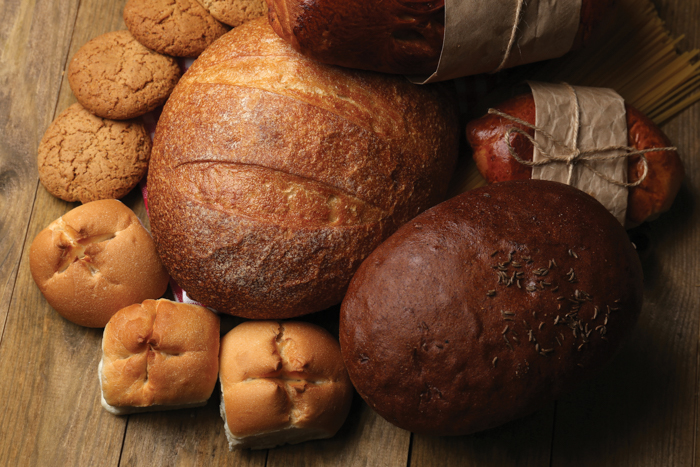The Forgotten Feast

During my first year of seminary, I was introduced to the love feast. Initially, I thought the combination of the words love and feast was my professor’s clever way of referring to the Lord’s Supper. Little did I know the love feast and holy communion, while both being communal feasts of the church, are two very distinct Christian meals. Although, not a sacrament, the love feast can be an effectual means of communicating God’s grace within the Christian community.
It certainly served in such a capacity for John Wesley and his Methodists. Likewise, many of our Nazarene forbears found the love feast an essential practice in the pursuit of Christian holiness.
What is a Love Feast?
John Wesley first experienced the love feast during his missionary endeavors in Georgia.1 He then borrowed the practice from the Moravians, who were instrumental in his spiritual development. Wesley’s interest heightened when he learned the love feast was practiced by the early church. The monthly feasts soon became a central component of the Wesleyan revivals in eighteenth-century England.2
However, the way Wesley practiced the love feast differed significantly from the Moravian approach. The Moravians believed the essential feature of the love feast is stillness—sitting quietly waiting for the Spirit to move, while avoiding the means of grace3 for fear that they would interfere with simple faith.
In contrast, Wesley argued the means of grace were essential.
The Holy Spirit works through these means to bring conviction, transformation, and spiritual nurture. The fundamental components of the love feast for Wesley and the Methodists included the reading of Scripture, testimonies, sharing the condition of one’s own spiritual state, the consumption of bread and water, singing, and an offering for the poor.4 Disagreements over the love feast were one of the issues that eventually led to John Wesley and the Moravians parting ways.5
Many of our Nazarene forebears who descended from Methodism brought into the Church of the Nazarene their love and appreciation for the Methodist love feast. Bresee began practicing the love feast as a Methodist pastor and retained this practice when the Church of the Nazarene was born.6 Love feasts occurred every other month in the afternoon service at Los Angeles First Church with a larger community love feast occurring on Christmas each year. During some of these years, The Nazarene Messenger recorded upwards of 500-700 people in attendance at the 2 ½ hour Christmas service.
Camp meetings and Nazarene congregations in the East also celebrated the love feast with regularity. Some churches held the love feast monthly, and on occasion it was followed with the sacrament of the Lord’s supper. The structure and content of the love feast was similar to Methodist practice. It involved prayer, the public reading of Scripture, the passing of bread and water, and singing; with most time reserved for testimonies.7 Conversion or entire sanctification were common. Eyewitness accounts often depict love feasts as spiritually robust events.
Rediscovering the Love Feast
If the love feast was so important and beneficial to early Nazarenes, then the looming questions is this: Why did it disappear from Nazarene practice? The answer to this question is complex, and it is important to keep in mind that the Church of the Nazarene was formed by a very diverse group of individuals focused on promoting Christian holiness.
The doctrine of Christian perfection bound them together in unity, while many held diverse opinions on other areas of doctrine and practice. Likewise, opinions on the most important practices needed to promote and nurture Christian holiness varied widely. Some early Nazarene leaders, like Phineas Bresee, believed the love feast was fundamental in fostering Christian holiness. Others did not find it as important. After the passing of the first generation of Nazarenes, the celebration of the love feast declined rapidly.8
Bresee practiced love feasts effectively in large church settings, but the love feast is perfectly suited for smaller congregations or small group settings. Wesley celebrated the love feast in Methodist societies and in band meetings with groups numbering seven or less.9 I would argue that the love feast is one of those early Nazarene practices worth recovering. The love feast is in our ecclesial blood as Wesleyans and Nazarenes, and more importantly, it is rooted in the practice of the early church. As a Christian practice, it can serve as a means of grace fostering unity, community, and spiritual nurture within local congregations.
Dirk R. Ellis serves as pastor of pastoral care and discipleship at Sun City Church of the Nazarene in Sun City, Arizona, USA, and is an adjunct professor at Northwest Nazarene University.
1. Frank Baker, Methodism and the Love-Feast, (New York: The Macmillan Company, 1957), 9–10.
2. Ibid., 10.
3. The means of grace include those ordinary channels though which the Spirit of God has chosen to work in communicating God’s grace to us. Included among the means of grace are searching the Scriptures, prayer, fasting, the Lord’s supper, and Christian conference.
4. Baker, 25.
5. Ibid., 12–13
6. Carl Bangs, Phineas F. Bresee: His Life in Methodism, The Holiness Movement, and the Church of the Nazarene, (Kansas City, MO: Beacon Hill Press, 1995), 152–3.
7. Other beverages can be used for the love feast including tea, apple juice, or grape juice. If grape juice is used, my preference is to use white grape juice instead of red, to avoid any possible confusion with the Lord’s supper.
8. Dirk R. Ellis, Holy Fire Fell: A History of Worship, Revivals, and Feasts in the Church of the Nazarene, Eugene, OR: WIPF & Stock, 2016), 188–95.
9. Baker, 10.
Holiness Today, November/December 2018
Please note: This article was originally published in 2018. All facts, figures, and titles were accurate to the best of our knowledge at that time but may have since changed.




